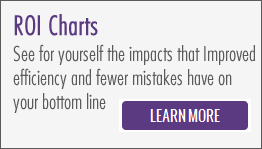Calculating Your Training ROI
As with any investment, whether in machinery or employees, a company must have some idea of the return on that investment. Only when the ROI reaches a minimum acceptable percentage (and it varies from company to company) does proceeding with the investment make sense.

And so it is with employee training. Let's face it, there is a bias towards investing in new machines. Why? One of the big reasons is that the ROI is easy to calculate. That makes the people writing the check comfortable.
In many ways, training is perceived to be an "intangible". And that makes the people writing the checks uncomfortable. If a hydraulic pump fails there's no question about getting it repaired or replaced. If a screw is damaged, the molding machine is idle until it's fixed. But when it comes to spending money on training, it's easy to say "We've gotten along fine without it so far, why spend the money now?".
The fact of the matter is you haven't gotten along without it. You're just spending your training dollars in hidden ways. It's not whether you're going to spend money on training, it's how. Most molders have adopted a "pay as you go" training program where mistakes are corrected after they occur, and inefficiencies are tolerated as normal or acceptable.
Being in the plastics manufacturing training business since the 1970's has taught us there is a better way to train. Our customers agree. An independent survey conducted with 51 Paulson customers revealed the following:
- 81% improved profit
- 73% reduced mold damage
- 69% reduced reject rates
- 68% reduced cycle times
- 35% reduced unscheduled downtime
While these results are eye-opening, the reduced costs and increased profits that directly resulted from the training are even more dramatic. These ROI charts let you see for yourself the impacts that improved efficiency and fewer mistakes have on your bottom line.
Whether it's one extra second on a planned 30 second cycle, a percent or two above your planned reject rate, or a couple of extra minutes of downtime per hour, the result is a huge impact on your costs and profits.
The key to realizing these cost savings and efficiency improvements on your bottom line is giving your employees the training they need to maximize productivity plant-wide. And there is no better way to train your employees than by using a proven systematic and on-going training system. Make it a system just like any of the other "systems" you use in day-to-day production. "Did you take you training course today?" "No". "Go take it.". Today, training is convenient, accessible to all job levels and takes care of all training documentation by employee, eliminating administrative headaches. But best of all, it's proven to pay for itself many times over.




